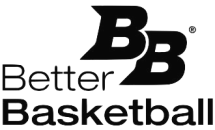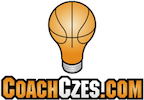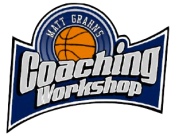Blog Archives
Toughness Defined by Jay Bilas
If you have not yet read Toughness: Developing True Strength On and Off the Court by Jay Bilas, I highly recommend you do. It is one of the best books I have  ever read. So good in fact that it gave me the idea to share all of my favorites quotes and moments from the book. Below you will find that each Chapter and Section is marked to give you a reference of the topic the “quote” came from. Anything not in quotations is a direct remark from Jay Bilas himself.
ever read. So good in fact that it gave me the idea to share all of my favorites quotes and moments from the book. Below you will find that each Chapter and Section is marked to give you a reference of the topic the “quote” came from. Anything not in quotations is a direct remark from Jay Bilas himself.
I hope you enjoy what I have shared. It is only about 1% of what the book brings to life, but hopefully it is enough to convince you to read it in entirely.
Toughness is Defined
Toughness isn’t physical. It has nothing to do with size, physical strength or athleticism. It’s an intangible, an attitude, a philosophy…I believe that true toughness is a skill that can be developed and improved in everyone.
Toughness is a descriptor of how much energy a material can absorb before breaking. Being tough is being Unbreakable!
Coaching Mental Toughness
“Toughness is doing what it takes to make a difference.” – Tom Izzo
Film Breakdown Part 1: Post-Game Analysis
Upon several requests, I have put together a three-part series of posts discussing how to watch film as after the game, with your team, and with individual players. Today I am going to discuss the process of watching and breaking down the game film individually as a coach to provide feedback for yourself and your coaching staff.
This post is going to about the process of how I break down film after a game every each night. The analysis below takes place after every game we play and it takes approximately 2 hours once I get home.
Post-Game Meeting
After each game our coaching staff meets in the head coaches office and we discuss the game for 15-20 minutes; What went well, what didn’t go well, and other thoughts about the game. As a staff, we try to reserve judgement with performance until watching the game film. During this time, I will reference some notes that I wrote down during the game about some aspects that I think would be good to look for when breaking down the film (i.e.- Transition defense, defensive rebounding, rotational breakdowns, etc.) and also gather thoughts from my head coach on things he would like for me to focus on while watching the film.
Post-Game Report
After gathering our post-game perspective, I head home and start uploading the film for breakdown onto our editing tool. During the upload time (usually takes about 25 minutes), I analyze and input the data I have on my Offensive and Defensive Efficiency Chart and look for any positive and negative trends from the game. This chart will also factor into indicators while watching film. Once all the numbers totaled, I will start typing up my Post[Game Report for my head coach. I got this tremendous idea from the LA Clippers’ Kevin Eastman. Eastman took it upon himself each night after their games to write-up a post-game report and slide it under head coach Doc Rivers’ door for reading the next morning. I am not sure what Kevin’s looked like, but in my report I include the following:
- Quarter by Quarter Scoring with +/-
- Rebound Comparisons each half and game total (Out rebounding the opponent is a huge component of our program)
- Offensive and Defensive notes referencing the Efficiency Chart I mentioned above
- As well as any notes I gather from the film in regards to our performance (Good and Bad)
- Any ideas or recommendations for upcoming practices that I think will help our team
If you are interested in a sample of what mine looks like just drop me a note and I would be glad to email you.
NBA Terminology: UCLA vs Hawk Cuts
I have decided to create a few new posts regarding NBA Terminology. Constantly I am always trying to figure out the terminology used by the best basketball coaches in the world to become a better teacher/coach. That is one reason why I absolutely love attending Orlando’s NBA Summer League. Not only do I get to sit with a lot of close friends and clients all day, but the intimate set-up allows you to sit court-side and really absorb what is going one without the distraction of the fans that are out in Las Vegas.
One thing that I learned from Boston Celtics Assistant Coach Kevin Eastman several years ago was to always have some type of writing utensil in hand no matter where you are. You never know when you will see or hear something you want to use. While I attended the Orlando Summer League I took my look spiral notebook and felt like a news reporter my pen was so busy.
The amount of focus NBA coaches put into scouting and guarding different actions based on the location on the floor is mind boggling. One thing that I talked to Detroit Pistons video coordinator Ryan Winters (we worked together at Florida) about was the difference between a UCLA cut and a Hawk cut. To the untrained eye, they both look like UCLA cuts; but that is not the case to the observing eyes of NBA coaches.
UCLA Cut: A UCLA cut is a cut off the post that is initiated first by a pass to the wing.
Hawk Cut: A Hawk cut is a cut off the post that is initiated by a dribble entry to the wing in which a pass does not occur.
So the next time you are watching an NBA game and you hear a coach yell out from the bench, “Get ready for the Hawk cut”, now you know what they are talking about.
Chaotic Shooting Drill
Today’s drill is one I got from Boston Celtics Assistant Coach Kevin Eastman. Chaotic shooting incorporates shooting under pressure and quick changes of direction to pick up a ball and shoot it quickly.








